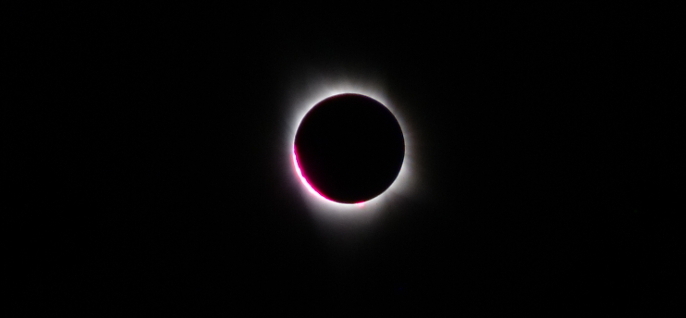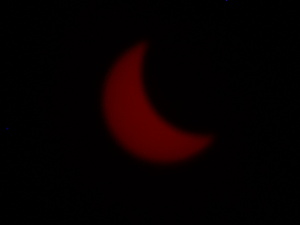| Previous
Page |
PCLinuxOS
Magazine |
PCLinuxOS |
Article List |
Disclaimer |
Next Page |
2017 Solar Eclipse Wows North America |
|
by Paul Arnote (parnote)
On August 21, 2017, North America experienced its first coast-to-coast total solar eclipse in nearly 100 years (98 years, to be exact). 12.25 million people live within the path of totality (where you can expect to see a 100% total solar eclipse), with estimates ranging from 2 million to 7 million additional people travelling from all over the world to see the eclipse within the path of totality. The total solar eclipse traveled from the Oregon coast, east to the Carolinas, right through the middle most part of the United States. Those outside the path of totality got to see a partial solar eclipse, with a lesser portion of the sun being blocked out by the moon the greater distance the viewer was from the path of totality. This solar eclipse featured a path of totality of approximately 70 miles (113 Km) wide. Depending on where you were within that path of totality, you witnessed anywhere from around one minute of total solar blackout, to almost three minutes. The closer the viewer was to the center of the path of totality, the longer the total eclipse lasted. Unfortunately, some viewers were blocked out from seeing the solar eclipse at all by cloud cover and the weather (as in our assistant editor Meemaw's case, when she was visiting friends in Lawrence, Kansas).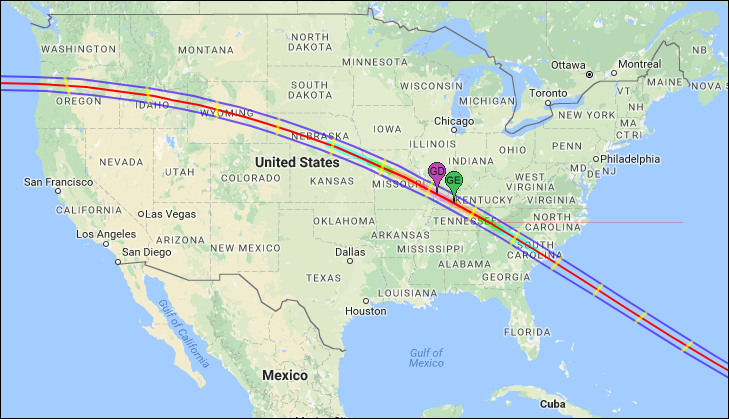 Path of totality of 2017 total solar eclipse. Source: NASA Where I live, in Independence, Missouri, we were almost shut out from the total eclipse by the weather. Around 9:00 a.m. (CDT), a thunderstorm rolled through with torrential rains, thunder and lightning. Then, about 30 to 45 minutes before the start of the eclipse (at 11:46 a.m. CDT), the rain stopped and the clouds parted. About an hour after the eclipse, the clouds and storms moved back in, and we experienced thunderstorms off and on for the rest of the day and into the night. Look around, because your surroundings will hold some equally amazing sights. For example, the shadow of leaves on the ground will look way different, almost as if each little leaf projects its own copy of the eclipse above. The magazine's host and HTML layout champion, Mr. Cranky Pants - YouCantoo, was also in the path of totality, near the Oregon coast. He managed to capture some pretty amazing photos, as well. 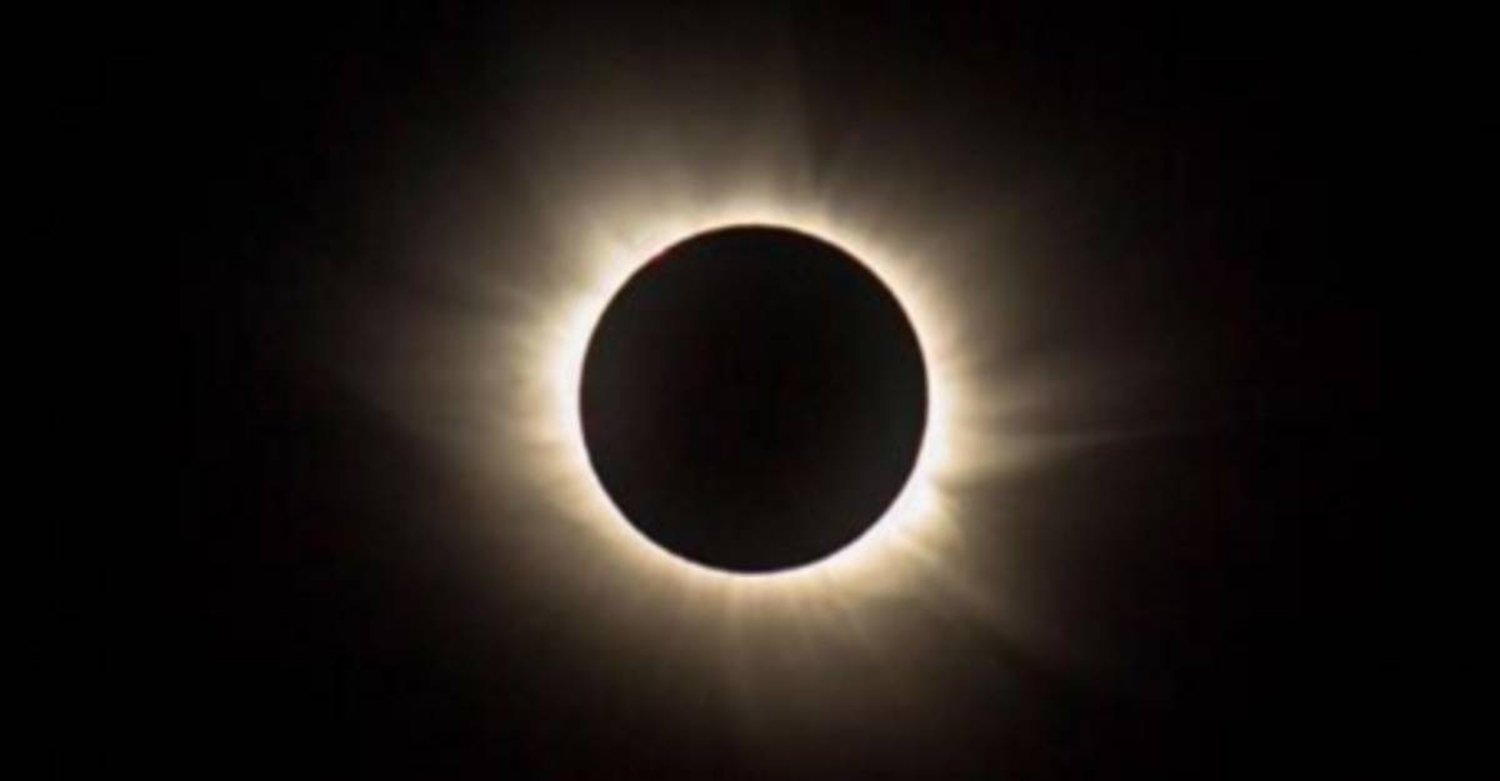 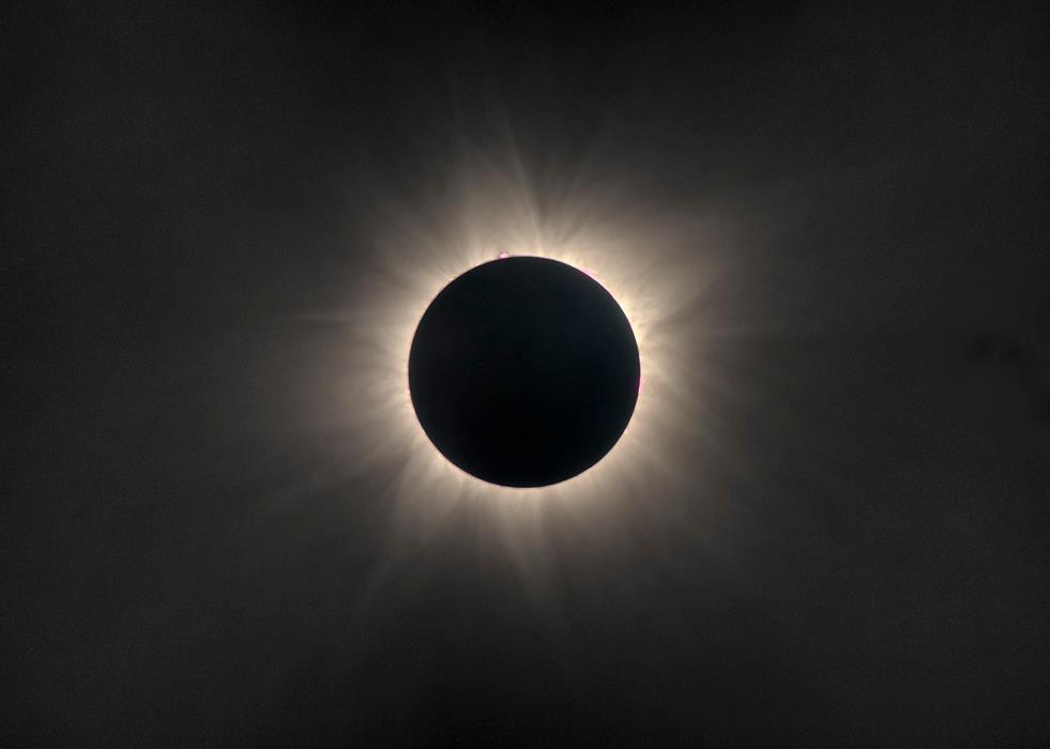 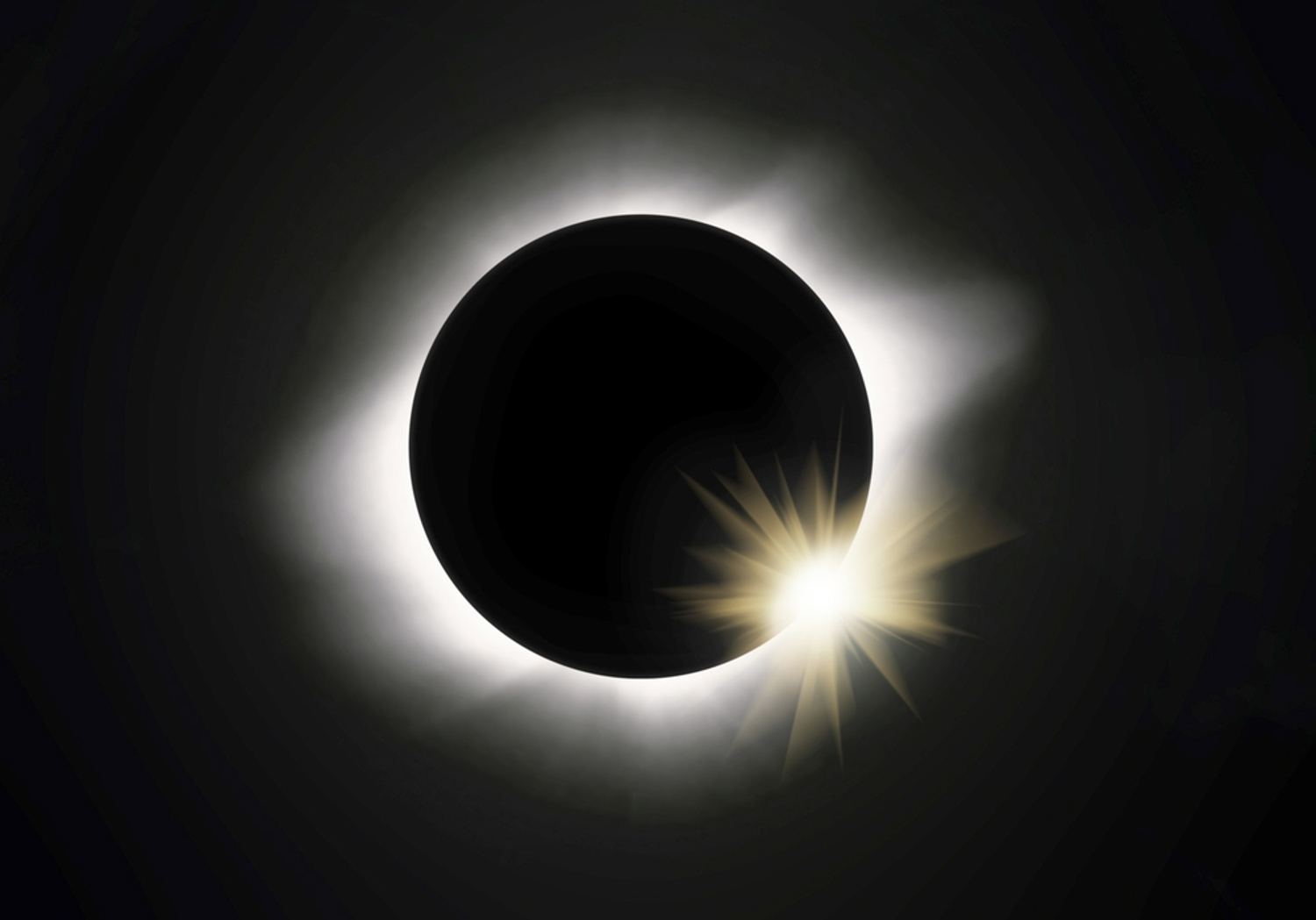 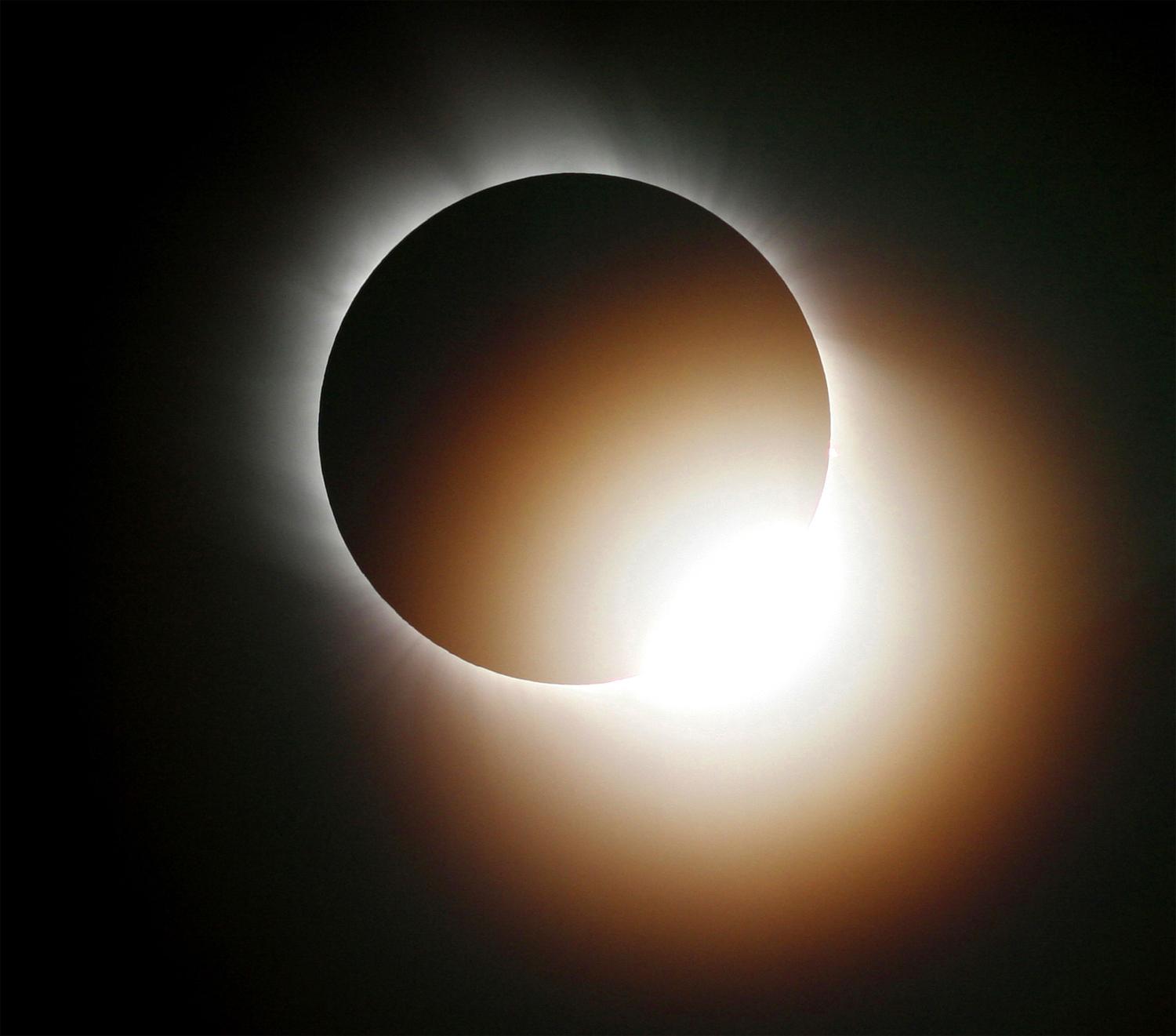 Photos by YouCanToo As you can imagine, NASA was working overtime on August 21, 2017, to capture the rare North American total solar eclipse from as many angles as possible. NASA had teams everywhere you can imagine. Two high speed jets tracked the solar eclipse along the path of totality. The astronauts aboard the ISS (International Space Station) captured views of the eclipse -- three times. Personnel were placed all along the path of totality, giving the agency as much coverage and data collection capability as possible.  NASA/Joel Kowsky As luck would have it, the ISS photo bombed the total solar eclipse, in a way. In the composite image above (made from seven different exposures), the ISS is seen tracking across the partial solar eclipse, not long after the eclipse started. A total solar eclipse occurs somewhere on the planet (on average) every 18 months. The next one will be in the southern Pacific ocean, and traverse across Chile and Argentina, on July 2, 2019. So why doesn't a total solar eclipse occur more often? Well, this explanation from Wikipedia should explain it sufficiently. Click here to read the entire Wikipedia entry on solar eclipses. A solar eclipse (as seen from the planet Earth) is a type of eclipse that occurs when the Moon passes between the Sun and Earth, and when the Moon fully or partially blocks ("occults") the Sun. This can happen only at new moon when the Sun and the Moon are in conjunction as seen from Earth in an alignment referred to as syzygy. In a total eclipse, the disk of the Sun is fully obscured by the Moon. In partial and annular eclipses, only part of the Sun is obscured. If the Moon were in a perfectly circular orbit, a little closer to the Earth, and in the same orbital plane, there would be total solar eclipses every month. However, since the Moon's orbit is tilted at more than 5 degrees to the Earth's orbit around the Sun, its shadow usually misses Earth. The Moon's orbit must cross Earth's ecliptic plane in order for an eclipse (both solar as well as lunar) to occur. In addition, the Moon's actual orbit is elliptical, often taking it far enough away from Earth that its apparent size is not large enough to block the Sun entirely. The orbital planes cross each other at a line of nodes resulting in at least two, and up to five, solar eclipses occurring each year; no more than two of which can be total eclipses. However, total solar eclipses are rare at any particular location because totality exists only along a narrow path on the Earth's surface traced by the Moon's shadow or umbra. So what if you missed it? Well, you can always watch video from those who were able to catch the 2017 total solar eclipse. But that isn't nearly as satisfying as seeing it yourself, live and in person. Don't despair, because astronomers have all of the future solar eclipses predicted out to the year 3000, along with their routes.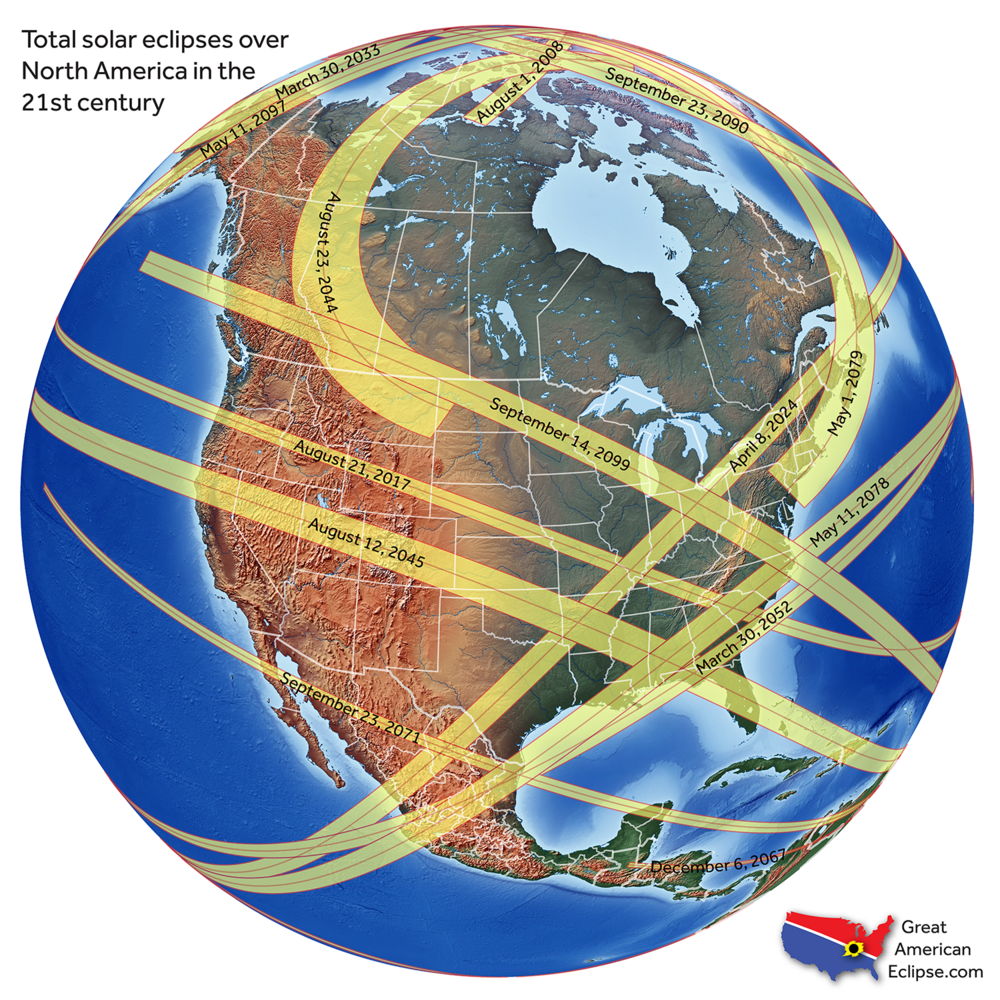 Besides this map of North America, they have another map of the solar eclipses across the whole world from 2011 to 2060. This world map is available for purchase from here, for $10 (U.S.). The next solar eclipse for North America will be in 2024, and cut across Mexico, the United States, and parts of eastern Canada. The map above shows the paths of totality. The 2024 solar eclipse appears to cut a path of totality across the following U.S. cities:
Dallas, Texas Summary For many people -- probably most, actually -- viewing a total solar eclipse where you live is a once in a lifetime opportunity. To be sure, viewing a total solar eclipse live and in person isn't a disappointment by any measure. I can attest that it is a magnificent and grand event to witness, as you marvel at the forces of the natural world around us. If you ever have the chance to witness a total solar eclipse live and in person, by all means possible, avail yourself of the chance. It will be something that you will never forget. Just don't forget to look around at your surroundings and other people nearby who are also viewing the eclipse, lest you miss some really nice photos and memories. |
||||

